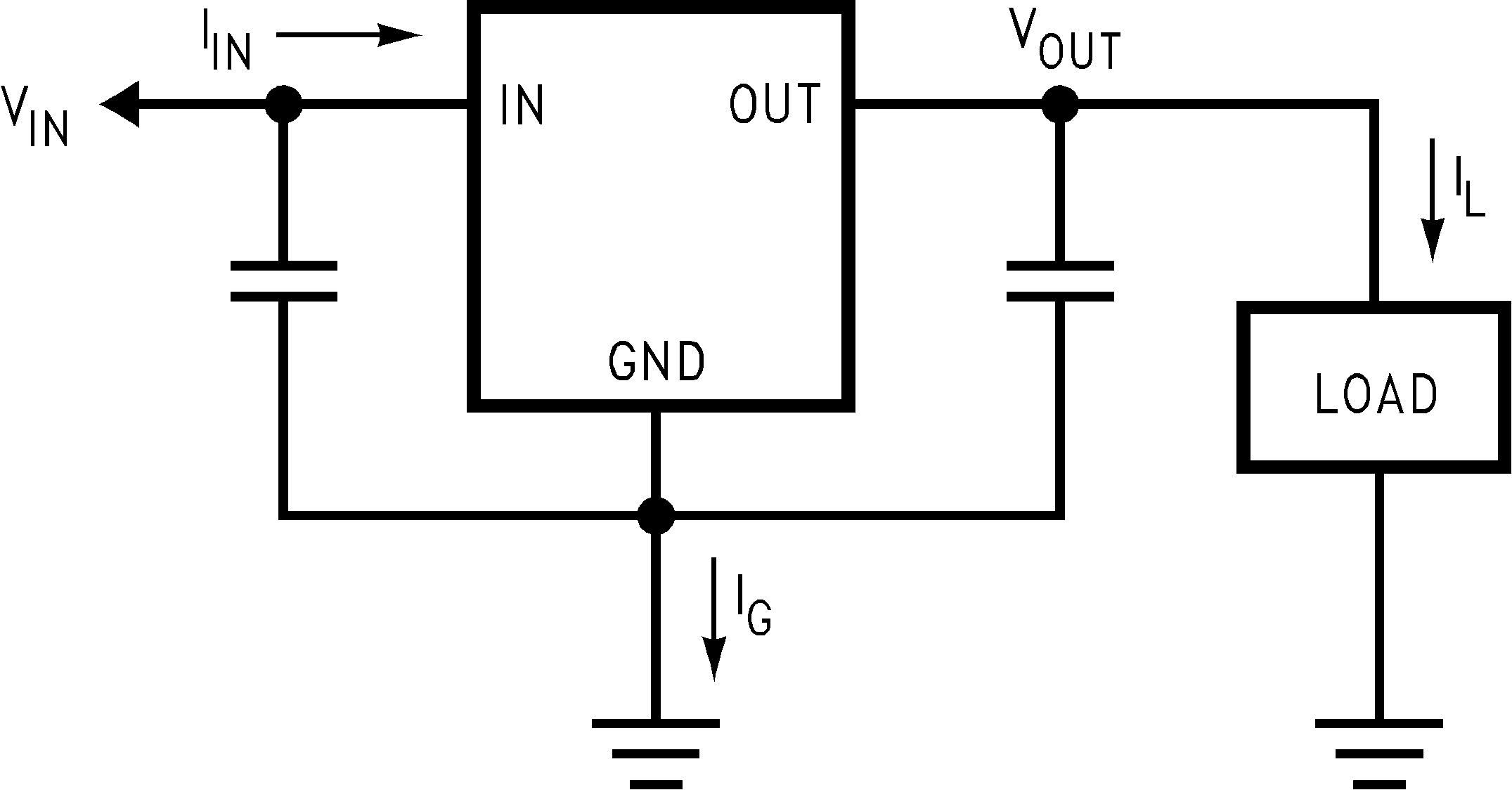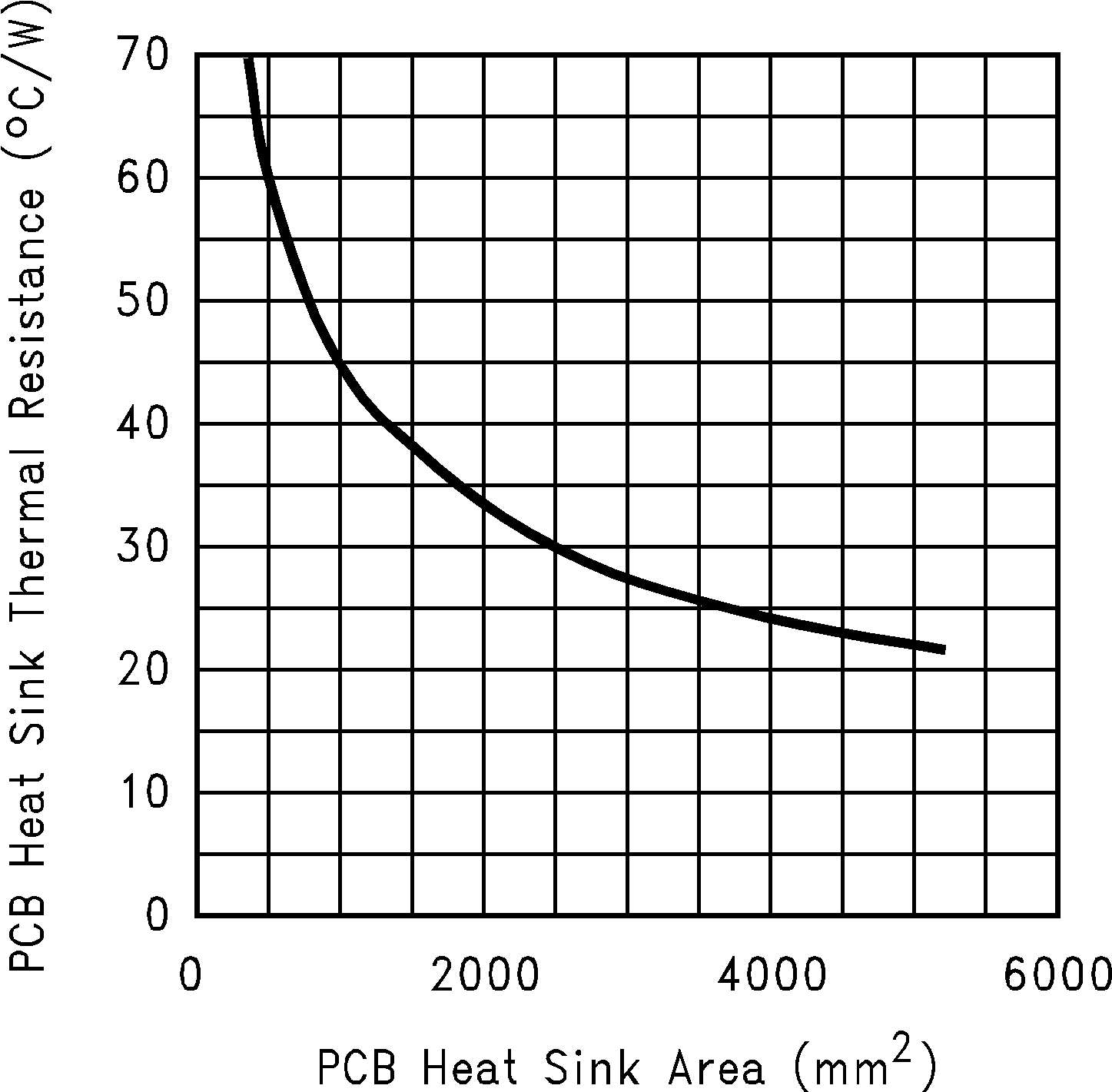ZHCSTG3H September 1999 – March 2024 LM1084
PRODUCTION DATA
- 1
- 1 特性
- 2 应用
- 3 说明
- 4 Pin Configuration and Functions
- 5 Specifications
- 6 Detailed Description
-
7 Application and Implementation
- 7.1 Application Information
- 7.2
Typical Applications
- 7.2.1 1.2-V to 15-V Adjustable Regulator
- 7.2.2 Adjustable at 5 V
- 7.2.3 5-V Regulator With Shutdown
- 7.2.4 Battery Charger
- 7.2.5 Adjustable Fixed Regulator
- 7.2.6 Regulator with Reference
- 7.2.7 High Current Lamp Driver Protection
- 7.2.8 Battery Backup Regulated Supply
- 7.2.9 Ripple Rejection Enhancement
- 7.2.10 Automatic Light Control
- 7.2.11 Generating Negative Supply Voltage
- 7.2.12 Remote Sensing
- 7.3 Power Supply Recommendations
- 7.4 Layout
- 8 Device and Documentation Support
- 9 Revision History
- 10Mechanical, Packaging, and Orderable Information
封装选项
机械数据 (封装 | 引脚)
散热焊盘机械数据 (封装 | 引脚)
- KTT|3
订购信息
7.4.1.1 Thermal Considerations
ICs heats up when in operation, and power consumption is one factor in how hot it gets. The other factor is how well the heat is dissipated. Heat dissipation is predictable by knowing the thermal resistance between the IC and ambient (θJA). Thermal resistance has units of temperature per power (C/W). The higher the thermal resistance, the hotter the IC.
The LM1084 specifies the thermal resistance for each package as junction to case (θJC). In order to get the total resistance to ambient (θJA), two other thermal resistance must be added, one for case to heat-sink (θCH) and one for heatsink to ambient (θHA). The junction temperature can be predicted as follows:
TJ is junction temperature, TA is ambient temperature, and PD is the power consumption of the device. Device power consumption is calculated as follows:
Figure 7-13 shows the voltages and currents which are present in the circuit.
 Figure 7-13 Power Dissipation
Diagram
Figure 7-13 Power Dissipation
DiagramOnce the devices power is determined, the maximum allowable (θJA (max)) is calculated as:
The LM1084 has different temperature specifications for two different sections of the IC: the control section and the output section. The Thermal Information table shows the junction to case thermal resistances for each of these sections, while the maximum junction temperatures (TJ(max)) for each section is listed in the Absolute Maximum Ratings table. TJ(max) is 125°C for the control section, while TJ(max) is 150°C for the output section.
θJA (max) should be calculated separately for each section as follows:
The required heat sink is determined by calculating its required thermal resistance (θHA (max)).
(θHA (max)) should also be calculated twice as follows:
If thermal compound is used, θCH can be estimated at 0.2 C/W. If the case is soldered to the heat sink, then a θCH can be estimated as 0 C/W.
After, θHA (max) is calculated for each section, choose the lower of the two θHA (max) values to determine the appropriate heat sink.
If PC board copper is going to be used as a heat sink, then Figure 7-14 can be used to determine the appropriate area (size) of copper foil required.
 Figure 7-14 Heat Sink Thermal Resistance
vs Area
Figure 7-14 Heat Sink Thermal Resistance
vs Area